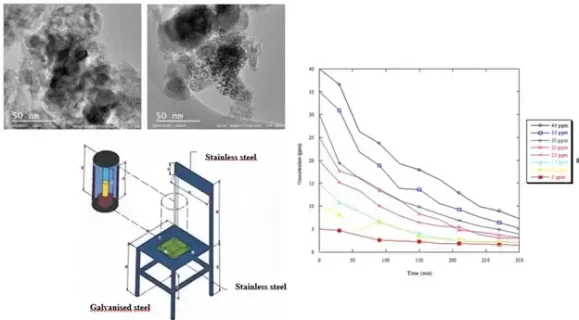Fluidized bed photoreactor for the removal of acetaminophen and pyridine using Al-doped TiO2 supported on alumina
Authors
-
Carlos Montalvo
*
 1
1
- Ruby Sheila Gines 2
- Denis Cantu 2
- Alejandro Ruiz 1
- Claudia Alejandra Aguilar 1
- Isai Perez 1
- Rosa Maria Ceron 1
Abstract
In this investigation, a fluidized bed photocatalytic reaction system was designed to eliminate emerging contaminants: acetaminophen and pyridine in water. Titanium dioxide (TiO2) doped with aluminum (Al3+) using the photo-deposition technique was used as a catalyst and supported on alumina beads (Al2O3). The catalyst´s doping was carried out by photo deposition with aluminum particles. The reactor, which is a quartz vessel with a capacity of 500 mL, where aluminum pearl, was previously impregnated with titanium oxide and calcined at 550 °C. The reactor feeding was carried out using a pump at a flow of 0.5 L/min; two lamps of UV light with 365 nm were used. The synthesized catalyst was characterized through Energy-dispersive X-ray analysis (EDX), Transmission Electron Microscopy (TEM), and X-ray diffraction (XRD) techniques, showing adequate impregnation of aluminum in the formed compound. Photoactivity analysis of the catalyst was performed at different contaminant concentrations, from 5-40 ppm for acetaminophen and 5-60 ppm for pyridine. Mineralization of more than 85% acetaminophen and 70 % pyridine was achieved after 300 min of UV illumination. The results demonstrate that using this photocatalytic arrangement as a decontamination technique for the pollutants such as acetaminophen and pyridine is feasible.




